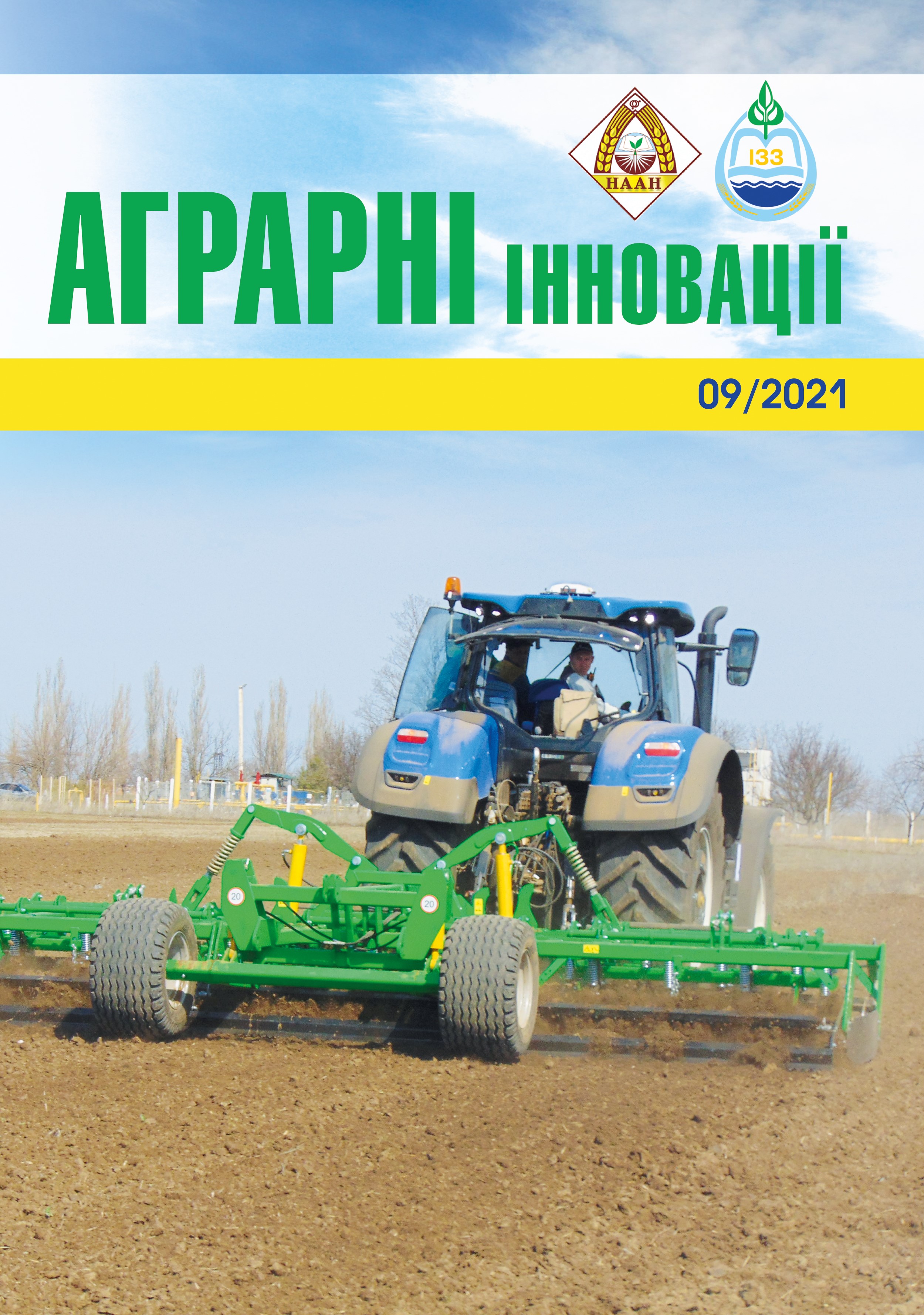Interdependence of Winter Wheat Grain Yield with Plant Height in the Conditions of Southern Ukraine
Abstract
The goal was to establish the relationship between the yield of winter wheat grain and the height of plants when grown in the south of Ukraine. Methods. Experimental studies were conducted during 2016–2019 yrs in the experimental field of the Mykolaiv NAU. The object of research was winter wheat. The technology of their cultivation, with the exception of the studied factors, was generally accepted to the existing zonal recommendations for the Southern Steppe of Ukraine. The area of the sown area was 50 m2, the accounting area was 26 m2, the repetition was 4-time, the placement of plots was consistent. It was predicted the following gradation of factors and their variants, such as predecessors (A) – black fallow, legumes (peas), cruciferous (spring mustard); doses of mineral fertilizers (B) – without basic fertilizer application, application of (NPK) 32 kg.D. R. / ha, application of (NPK) 64 kg.D. R./ha; bacterial preparations (C) – control, Biocomplex-BTU-R, Organic Balance. Results. Our research established that both in some years of cultivation and on average over the years of research, the yield of winter wheat grain was higher when placed on Black fallow. After peas or white mustard, when it was grown without the use of mineral fertilizers, but when treated with biologics, the yield was on average by 3.9–8.6%, and with their application at a dose of (NPK) 64 it was lower by 16.0–17.6% relative to black fallow. The polynomial correlation and regression relationships were calculated between plant height and winter wheat grain yield as they indicated that there was a very strong relationship between these indicators when the winter wheat was grown and treated with biologics. Conclusions. Studies established that there was a very strong correlation and regression relationship between plant height and winter wheat grain yield. The yield of winter wheat grain largely depended and changed under the influence of weather conditions of the growing season, the supply of plants with nutrients and foliar top dressing with bacterial preparations. As for studied the bacterial preparations the largest increase in yield was provided by top dressing with the bacterial preparation Organic Balance, and the lowest increase was provided by Biocomplex-BTU-R.
References
2. Патік С. Короткоротаційні сівозміни в умовах Степу України. Пропозиція. 2010. № 2. С. 47–51.
3. Розпутній М.В. Вирощування високоякісного зерна озимої пшениці та аспекти раннього прогнозування білковості. Науковий вісник НАУ, 1998. № 5. С. 265–268.
4. Агротехнологічні вимоги до сівби озимих культур під урожай 2019 року у Південному Степу України : науково-практичні рекомендації / уклад. : Р.А. Вожегова, С.О. Заєць, А. М. Коваленко [та ін.]. Миколаїв, 2018. 44 с.
5. Шевчук О.А., Кришталь О.О., Шевчук В.В. Екологічна безпека та перспектива застосування синтетичних регуляторів росту рослин. Вісник Вінницького політехнічного інституту. 2014. № 1(112). С. 34–39.
6. Григоришин В.В. та ін. Екологічна безпека застосування інгібіторів росту рослин. Matezialy XІІ Miedzynazodowej monkowi–pzactyaznej Konferenej «Naukowa myse informecyjne pomieki, 2016». Vol. 11. Przemyse i Nauke i studia, 2016. S. 30–31.
7. Гамаюнова В.В. та ін. Сучасні підходи до застосування мінеральних добрив за збереження грунтової родючості в умовах зміни клімату. Наукові горизонти, Scientific horizons. 2020. № 2 (87). С. 89–101.
8. Кудря С.И., Клочко Н.А., Кудря Н. А. Влагообеспеченность и урожайность пшеницы озимой в зависимости от предшественника. Вісник аграрної науки. Київ, 2007. № 7. С. 23–26.
9. Карпова А.В. Влияние предшественников на урожай семян пшеницы. Земледелие. 2002. № 2. С. 25–26.
10. Кимак Я.В. Економічна та енергетична ефективність, технології вирощування пшениці озимої в умовах північного Лісостепу. Науковий вісник Національного університету біоресурсів і природокористування. Київ. 2010. Вип. 145. С. 150–156.
11. Ярчук І.І., Сахаров В.Д. Вплив строків сівби, попередників і режимів живлення на якість зерна озимої пшениці. Агрохімія і ґрунтознавство. Міжвідомчий тематичний науковий збірник. Харків, 2002. Вип. 63. С. 75–77.
12. Рожков А.О., Пузік В.К., Каленська С.М. та ін. Дослідна справа в агрономії : навч. посібник : Статистична обробка результатів агрономічних досліджень / за ред. А. О. Рожкова. Харків : Майдан, 2016. 342 с.
13. Ушкаренко В.О., Нікішенко В.Л., Голобородько С.П., Коковіхін С.В. Дисперсійний і кореляційний аналіз у землеробстві та рослинництві : навч. посіб. Херсон : Айлант 2008. 272 с.
14. Гамаюнова В.В., Литовченко А.О., Музика Н.М. Значення попередника у формуванні зернової продуктивності озимих культур в умовах Степу України. Вісник ЖНЕАУ. №1(53). 2016. С. 80–87.






